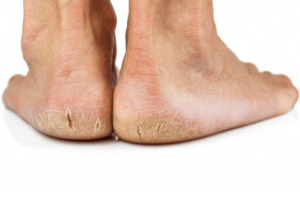Cracked heels, also known as heel fissures, are a common foot problem characterized by dry, cracked skin on the heels and edges of the feet. While often not serious, cracked heels can be painful and may lead to complications if deep cracks or fissures develop. Proper foot care and moisturizing can help prevent and treat cracked heels effectively.
Causes of Cracked Heels
- Dry Skin: Lack of moisture in the skin, especially on the heels, can lead to dryness and cracking.
- Pressure: Standing for prolonged periods or excess body weight can put pressure on the heels, causing the skin to crack.
- Open-Backed Shoes: Wearing shoes that do not support the heels can contribute to dryness and cracking.
- Cold Weather: Low humidity and cold temperatures can strip moisture from the skin, exacerbating dryness.
- Lack of Foot Care: Not moisturizing the feet regularly or neglecting proper foot hygiene can lead to cracked heels.
- Medical Conditions: Conditions such as diabetes, thyroid disease, or psoriasis can contribute to dry skin and increase the risk of cracked heels.

